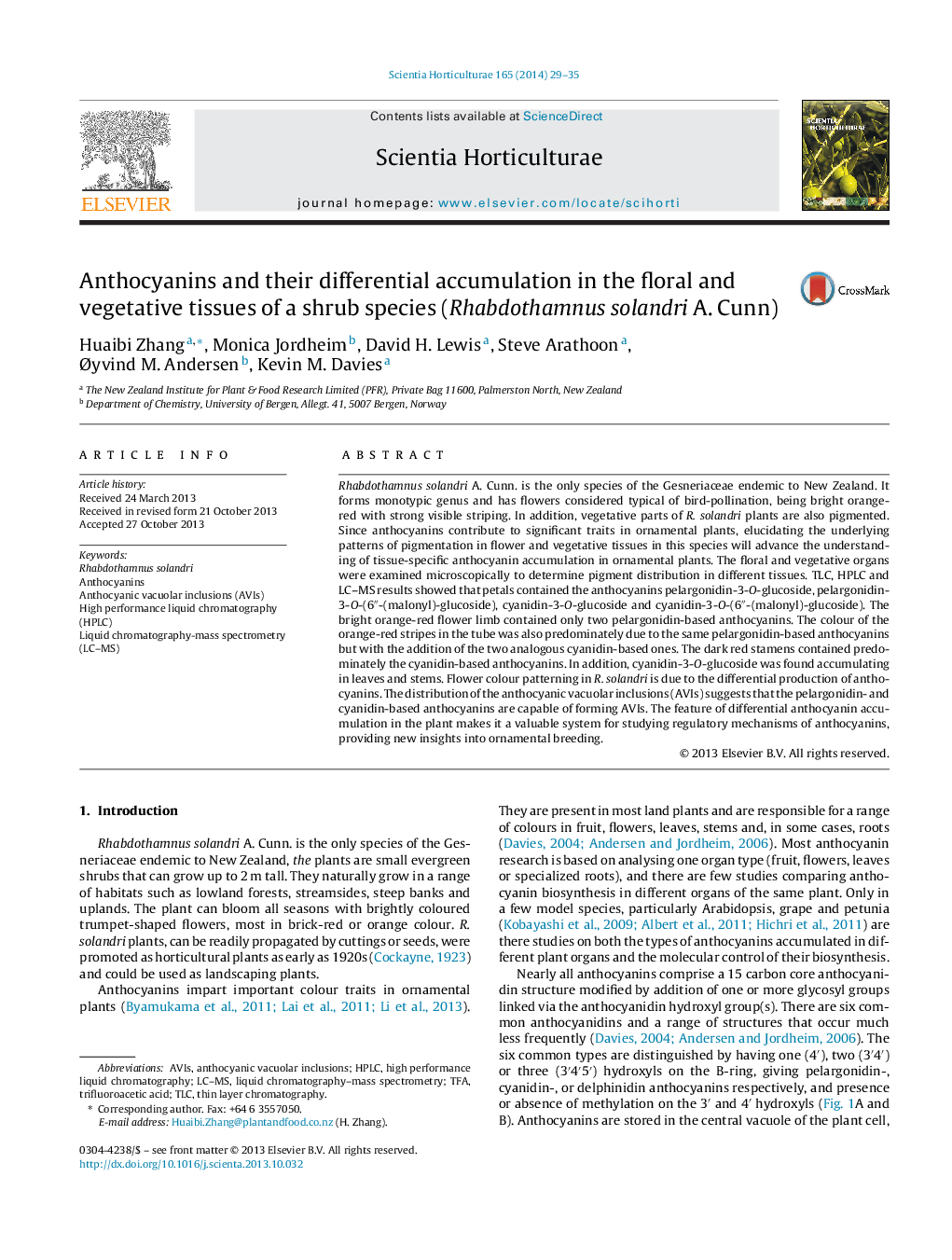| کد مقاله | کد نشریه | سال انتشار | مقاله انگلیسی | نسخه تمام متن |
|---|---|---|---|---|
| 6407373 | 1628833 | 2014 | 7 صفحه PDF | دانلود رایگان |

- New identifications of anthocyanins in the reproductive and vegetative organs of Rhabdothamnus solandri.
- The differential accumulation of pelargonidin-based and cyanidin-based anthocyanins underlies the colour patterns observed in the bird-pollinated Gesneriaceae species.
- Anthocyanin patterning in R. solandri is likely regulated through the differential activity of the flavonoid-3â²-hydroxylase.
- Anthocyanic vacuolar inclusions (AVIs) in the flowers suggest that basic anthocyanin structures without aromatic acylation can also form AVIs.
- A valuable system for studying regulatory mechanisms of anthocyanins, providing new insights into ornamental breeding.
Rhabdothamnus solandri A. Cunn. is the only species of the Gesneriaceae endemic to New Zealand. It forms monotypic genus and has flowers considered typical of bird-pollination, being bright orange-red with strong visible striping. In addition, vegetative parts of R. solandri plants are also pigmented. Since anthocyanins contribute to significant traits in ornamental plants, elucidating the underlying patterns of pigmentation in flower and vegetative tissues in this species will advance the understanding of tissue-specific anthocyanin accumulation in ornamental plants. The floral and vegetative organs were examined microscopically to determine pigment distribution in different tissues. TLC, HPLC and LC-MS results showed that petals contained the anthocyanins pelargonidin-3-O-glucoside, pelargonidin-3-O-(6â³-(malonyl)-glucoside), cyanidin-3-O-glucoside and cyanidin-3-O-(6â³-(malonyl)-glucoside). The bright orange-red flower limb contained only two pelargonidin-based anthocyanins. The colour of the orange-red stripes in the tube was also predominately due to the same pelargonidin-based anthocyanins but with the addition of the two analogous cyanidin-based ones. The dark red stamens contained predominately the cyanidin-based anthocyanins. In addition, cyanidin-3-O-glucoside was found accumulating in leaves and stems. Flower colour patterning in R. solandri is due to the differential production of anthocyanins. The distribution of the anthocyanic vacuolar inclusions (AVIs) suggests that the pelargonidin- and cyanidin-based anthocyanins are capable of forming AVIs. The feature of differential anthocyanin accumulation in the plant makes it a valuable system for studying regulatory mechanisms of anthocyanins, providing new insights into ornamental breeding.
Journal: Scientia Horticulturae - Volume 165, 22 January 2014, Pages 29-35